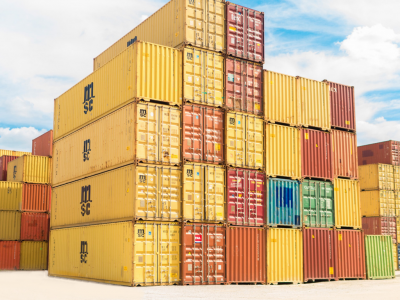Effective logistics involves more than just efficient fleet and transport management. It also concerns processes related to warehousing. To ensure that goods receipt, order picking, storage and dispatch are carried out efficiently, it is necessary to have warehouse mapping. This makes it easier to understand the flow of individual operations, identify bottlenecks, implement supporting technologies and more.
What is warehouse process mapping?
But let’s start with what warehouse process mapping means. It is a graphical or digital representation of the workflow in a warehouse. It covers not only employee activities, but also the use of equipment and IT systems. The result of warehouse mapping is a complete picture of warehouse processes, including delivery acceptance, the location of goods on shelves, and their release to the customer.
Mapping warehouse processes offers numerous benefits. It allows you to analyse the time required to complete individual tasks, standardise working practices and assess the use of warehouse space. It also makes it possible to quickly identify points where delays or errors occur and then implement improvements.
Why is process mapping the foundation of logistics?
Dropping process mapping in logistics often means dealing with excessive operating costs and difficulties in training new employees. Not having mapped processes can also mean limited transparency and cause a bunch of related issues.
So what are the benefits of process mapping in logistics? It is a way to eliminate unnecessary steps and, as a result, reduce costs. Clear procedures promote increased work safety, and fast, accurate order processing results in higher customer satisfaction. With mapped logistics processes, it becomes easier to implement new technologies such as ERP and WMS systems.
How does SAP support warehouse mapping?
SAP solutions are undoubtedly among the tools that support mapping and optimising processes in warehouses. Specific system modules, such as SAP Extended Warehouse Management (SAP EWM), enable real-time control of space, resources and employee tasks.
Warehouse mapping in SAP also provides easy access to a set of tools and configurations that allow you to represent, optimise, and manage warehouse processes. The system enables you to transfer them to a digital environment, thus facilitating real-time monitoring.
What is important, the SAP EWM solution does not require the implementation of certain schemes. The module allows you to adapt the mapping to the specifics of a given industry or warehouse type. This is very significant, given the growing complexity of supply chains. Thanks to the ability to map and define each step of the warehouse process, it becomes transparent, which means that it is easier to control.

SAP EWM – how does it work?
In SAP EWM, each warehouse process can be defined as a Warehouse Process Type. It is also necessary to assign activity areas that divide warehouse locations into logical units. This configuration enables precise task management for employees and optimisation of the paths that goods follow.
It is worth knowing that warehouse mapping in SAP does not end with diagrams. The system integrates with warehouse automation (Warehouse Control Systems) and Internet of Things devices. The result is not only material flow planning, but also automatic control and reporting.
Mapping warehouse processes with SAP EWM is an effective way to ensure repeatability in this area. Processes no longer depend on individual employee habits, but on rules defined in the system. This makes it easier to train new employees. All you need to do is familiarise them with the SAP procedure. In addition, standardised workflows help to reduce errors.
Another benefit of implementing the solution is the more efficient use of warehouse space and resources. In addition, warehouse mapping is a prerequisite for implementing automated solutions in the warehouse and for robotisation. If changes are made to warehouse processes, they can be easily redesigned in the system or new scenarios can be implemented.
In summary, mapping warehouse processes facilitates daily work, supports cost optimisation, and allows for faster response to changes. Combined with ERP and WMS systems such as SAP EWM, it gives companies a powerful tool for managing their warehouses in the future – intelligently, automatically, and resiliently.





